« Features
Ramiro Lacayo: Conversations In and Around Painting
 Ramiro Lacayo Deshón (Managua, Nicaragua, 1952) is one of the most interesting Central-American painters working these days. Lacayo began in the art world as a writer and filmmaker. In the mid-1970s, during the insurrection against dictator Anastasio Somoza, he joined the Leonel Rugama cinematographic brigade, which documented the armed struggle of the Sandinista National Liberation Front in film and photography. He was co-founder and director of the Nicaraguan Film Institute (INCINE) and the New Latin American Film Foundation. He also wrote screenplays and directed fiction films and documentaries that won awards and prizes at various international festivals. His short stories and poems have been published in numerous literary and cultural publications, including La Prensa Literaria, Nuevo Amanecer Cultural and Taller y Carátula. He has published a book of short stories, Nadie de Importancia (1984), and the novels Tejedor de vientos and Así en la tierra.
Ramiro Lacayo Deshón (Managua, Nicaragua, 1952) is one of the most interesting Central-American painters working these days. Lacayo began in the art world as a writer and filmmaker. In the mid-1970s, during the insurrection against dictator Anastasio Somoza, he joined the Leonel Rugama cinematographic brigade, which documented the armed struggle of the Sandinista National Liberation Front in film and photography. He was co-founder and director of the Nicaraguan Film Institute (INCINE) and the New Latin American Film Foundation. He also wrote screenplays and directed fiction films and documentaries that won awards and prizes at various international festivals. His short stories and poems have been published in numerous literary and cultural publications, including La Prensa Literaria, Nuevo Amanecer Cultural and Taller y Carátula. He has published a book of short stories, Nadie de Importancia (1984), and the novels Tejedor de vientos and Así en la tierra.
Over the last two decades, Lacayo has developed an extensive body of work that evidences his technical mastery. His pictorial language has evolved into Abstract Expressionism, passing through Impressionism, Realism, Cubism and expressionistic figuration. It is the result of his knowledge of the history of painting and his aesthetic and philosophical “conversations” on a pictorial level with the legacy of masters such as Willen de Kooning, Mark Rothko, Robert Motherwell, Jackson Pollock and many others. After decades of “narrating stories,” he has managed to synthesize words in brushstrokes and gestures in compositions that converse with the spectator on a subconscious level.
In this interview, Lacayo shares with ARTPULSE details of his creative process, his artistic evolution and the series on which he is currently working. He also reveals his intellectual position in regards to originality and the challenges that a painter faces in 21st century.
By Raisa Clavijo
Raisa Clavijo - Tell me about how your pictorial language has evolved since your first impressionistic works, passing through Realism, Cubism, expressionistic figuration, to reach Abstract Expressionism, which has become a constant in your work since 2012 with your exhibition “Gritos y susurros” (Screams and Whispers) presented at the Galería Codice in Managua. Why has the language of abstraction satisfied your expressive needs?
Ramiro Lacayo - Of course, the classics-Rembrandt, Velásquez-are the foundations of the visual arts, but I believe that it is through Impressionism and Expressionism that we embarked upon the path we continue to travel. What better way to follow the evolution toward contemporary art than by allowing yourself to be influenced by its different phases?
That is why in my work there are some marked tendencies toward certain movements or schools; later on, I move in another direction. This evolution led me to search for a renewed and different figuration; for example, exploring new ways of simplifying the human body, which little by little turned into a figure with fewer traits, without losing expressivity and movement. From there, the leap to pure abstraction was inevitable.
Paradoxically, I find abstraction more expressive, and although a little complex, more communicative. Even though we are not recounting an anecdote, we transmit warm feelings, sensations. Every painting is about something: an emotion, a mood. They are strokes that come from the subconscious. I usually observe that my paintings dialogue with the viewer at different levels.
Wouldn’t it be ideal to communicate with each other from one psyche to another? It’s important that the painting speaks, that it communicates something, even silence, because if it leaves you unaffected, it’s not worthwhile.
R.C. - Between 2012 and 2013, you developed an extensive series of works that you entitled “Conversaciones con el Expresionismo Abstracto” (Conversations with Abstract Expressionism). What was the intent of this exercise? What challenges did you confront during the creative process?
R.L. - These conversations were not appropriations, but rather dialogues with painters from Abstract Expressionism in which colors, compositions and movements substitute for words. Each one of them was telling me something different. The challenge was that they not be unilateral or turn out to be lessons rather than conversations. It was a matter of trying to communicate as if we were both working on the same painting.
Some cases were difficult, such as in the case of Pollock or Rothko, where, given the very defined format, you could easily end up with a copy, and others, like de Kooning, with their overwhelming influence, eclipsed my voice. In general, however, the interchange with their languages was open and allowed me to combine my work with theirs.
What did I get out of this project? I gained a very interesting collection, a very positive influence that I would likewise have to resist; in the best of cases, a pleasant chat with individuals I admire, you know, as though having a beer.
R.C. - The art critic Janet Batet, in the essay accompanying the book published on the occasion of “Conversaciones con el Expresionismo Abstracto,” points out that your selection of Abstract Expressionism responded among other factors to a period of personal deception in the 1990s and a search for new horizons both personal and expressive. Under what conditions did you select this language?
R.L. - At the end of the 1970s, the Sandinista philosophy proposed advocating for change that would eradicate social injustice and construct a modern society. I participated in this endeavor in many ways, including joining the war effort. In the 1980s, we believed we were realizing a dream, which little by little faded away. In the 1990s, the people chose a different alternative, and at that moment of electoral defeat there were abuses and inconsistencies in Sandinism, disillusionment.
This in me, more than wisdom, brought up questions about my being and what I should do. I then decided to self-impose a vow of artistic silence and to dedicate myself to other activities like the purchase of cattle, agriculture. But my inclination toward drawing was too strong; I continued to draw, and this led me to work with ever more complex media. The answers I sought, in reflection, I actually found in painting; I rediscovered myself in the smudges.
It was a subconscious process where colors and forms helped me reorganize my life, and I felt that I still had things to say. It was a kind of post-war period of uprooting, and similar eras often bring aesthetic solutions similar to the one I found.
R.C. - Of all of the artists whose work you dialogued with in “Conversaciones con el Expresionismo Abstracto,” which one did you identify with the most?
R.L. - Willem de Kooning would be my first answer. His bold use of color, his strong and free brushstrokes, his compositions more based on intuition than on tradition have influenced me since my figurative period, and perhaps he led me by the hand to abstraction. The truth is that all of them are heroes of the visual arts: Joan Mitchell, Franz Kline, Robert Motherwell. We must not forget the other side: Tachisme, Burri, Dubuffet, Asger Jorn, Fontana, Mathieu, Tàpies and so many others who have enriched this expressionist tradition.
R.C. - Is there a symbolic intention in your use of color? How has your use of color changed over time?
R.L. - I’m sure there has been an evolution in my use of color; I’m always trying to combine it without repressing it. Those who have followed my career are perhaps more aware of this evolution. What I can tell you is that I’m still seeking ways to illuminate the paintings, use unexpected combinations and maintain the natural vibration of the pigment.
More than serving a symbolic purpose, they are the reflections of this clear, strong, brilliant tropical light. I’m sure that if I lived in Finland, my palette would be different. Beyond a planned symbolic use, there is an intuitive use of color.
R.C. - Parallel to your pictorial work, you have developed a successful career in the film industry as a director and screenwriter of both movies and documentaries. You have also authored several short stories, novels and books of poetry. I find it interesting that after passing through a realist phase as well as another of expressionist figuration, you have shown a preference for abstraction as pictorial language when words and a narrative quality are essential elements in your literary and cinematographic work. Instinctively, I am in inclined to think that in your current work there must be a narrative component hidden among the textures and brushstrokes. Does your current pictorial work contain a narrative? Precisely, some titles of works-Volver (Going Back), Borrado (Erasure), Circo (Circus), Otro Cielo (Another Sky), Algoritmo (Algorithm), En los Cayos (In the Keys), Paisaje con Bañista (Landscape with Bather)-currently being shown at The Americas Collection in Miami lead the beholder to search for the presence of this hypothetical narrative.
R.L. - The marvelous thing about this art is that it doesn’t need a narrative to transmit something. The communication is on another level. I try to suppress literal, iconic and anecdotal elements. A separate issue is what people perceive in my work or think that I’m trying to suggest. I consider these interpretations valid in every case.
If there are symbols or some kind of narrative, it comes from my subconscious. At times, even I don’t have them very clear, but they are definitely saying something. The paintings are always about something. Even a single line conveys a story with a beginning, a conflict and an outcome.
With respect to the names I give the paintings, they arise as the piece begins to manifest itself. That is to say, the painting whispers it to me.
A lot of times it’s the ambience of a landscape I recently visited or a light. Some of the emotions I try to express are more distinguishable; others cannot be expressed in words, but all the same, they have to be given names. It would be ideal to give them numbers, ‘lot 436,’ so each person could give it a name in accordance with what the painting suggests to him …
R.C. - Every work of art is intrinsically tied to the experiences of its author; it is the result of a profound process of self-discovery and is obviously a child of its times. Kandinsky said that “each painting mysteriously encapsulates an entire life.” Do the pieces you are currently working on have any autobiographical resonance?
R.L. - All of my work is personal and in that sense autobiographical. Although it may only be a reflection of the moment, of the present in which I am living, the painting intrinsically carries my story and the one that surrounds me, not as arrogantly portraying myself, but as testimony. They are like an X-ray of that nebulous and elemental world in which we live.
How can we relate the one, the work of art, with the other, life, circumstances? It’s difficult to explain because it is not precise, nor can it be put into words. It is even more difficult when the past is always changing due to the mood of the moment in which we observe it. There are moments when your life appears happy, full, and seconds later, you look again and it is miserable. We are like particles, always jumping and reacting, but never in the same place.
It is difficult to think about which are the most explicit. Perhaps I identify the most with my white, in a way minimalist, paintings. My white paintings are like slightly cloudy mirrors with few but decisive strokes.
R.C. - Harold Rosenberg, in an essay published in ARTnews regarding Abstract Expressionism, referred to the canvas as “an arena in which to act.” How does this gestural and somewhat cathartic aspect of the creative act function in your work? Is your creative process mainly intuitive and spontaneous, or do you plan the composition ahead of time, the tones and the imagery that the work will contain?
R.L. - As I mentioned to you before, my work is very intuitive, and it is created in the moment as I paint. At times, it can be achieved in one session; at others, it refuses to come out and years can go by before finding a remedy. Although sometimes you start with a very schematic sketch or idea, the very needs of the painting impose themselves and you abandon the sketch for something new and surprising. As Rosenberg says, you paint with your entire body; to paint is to dance, and in that sense the painting is also an action, an ‘event,’ and if the mechanics, with its hits and misses, can be captured, all the better. The act of painting is an epiphany where something important is manifested, revealed.
R.C. - In the catalogue created on the occasion of “Conversaciones con el Expresionismo Abstracto,” it is noted that until the beginning of the 21st century, for you painting was a rather private act, not a consciously professional exercise. Tell me how you decided to let the works out of the studio.
R.L. - It was private in the sense that my paintings, drawings, marks, were like a diary written primarily for me. Although I sold some paintings, that wasn’t the aim. I didn’t pursue showing them either, until one day I was convinced to show them to a gallerist and curator, and he liked them so much that he insisted I participate in a group show entitled “Materia Nueva.”
The couple of pieces I exhibited had great impact, and people wanted to see more from me. A career in exhibitions began, which little by little transcended the local scene.
My “private” painting also tried to be “professional.” It’s just that I didn’t exhibit it. It was a little like diaries written by authors or poets, like Thomas Merton. In the end, I kept few of those ‘pages,’ since most of them passed into other hands and followed their independent destiny.
R.C. - Today, originality is a very big challenge for artists. Being original is complicated when in painting almost everything appears to have already been invented. Picasso said, “Good artists borrow; great artists steal.” How do you feel about the future of painting? Where do you think contemporary artist should look for answers?
R.L. - That is very difficult and controversial with so many trends in contemporary art. I believe than an artist should allow himself to be influenced and insert himself in the tradition of painting, but he will only be able to find answers within himself, in the renewal of these influences. If we consider art as individual expression, as an authentic search, then not everything has been said since we all have something special to say. The difficulty is garnering attention in such a saturated market.
With reference to contemporary painting, only the passage of time will distill the good and forget art that is grandiose and gimmicky. I believe that today there are artists every bit as good as those of prior periods who are contributing to the advancement of painting or the visual arts in general. To be honest, many others leave me indifferent.
R.C. - What are you working on at the moment?
R.L. - I am always trying to renew my language, to go beyond what I have done to find new formulae. I don’t like repeating myself, although at times it is inevitable.
I have been working on some pieces that retake elements of Cubism in its most analytic phase, some geometric elements, planes, floating in colors, always within the abstract. And on another note, I continue with my intuitive experiments, seeking ever more incredible, expressive strokes, involving media beyond the brush and spatula and contrasting more diluted colors with matter textures. There are so many things one might want to do, to experience, but every day I have less time.
Raisa Clavijo is the editor-in-chief of ARTPULSE. She is an art historian, critic and curator based in Miami. Clavijo has a B.A. in art history from the University of Havana and a master’s degree in museum studies from the Universidad Iberoamericana in Mexico City. Former chief curator at Museo Arocena in Mexico (2002-2006), she founded Wynwood: The Art Magazine, in Miami, where she worked as editor from 2007 to 2009. In 2009, she founded ARTPULSE and ARTDISTRICTS magazines.

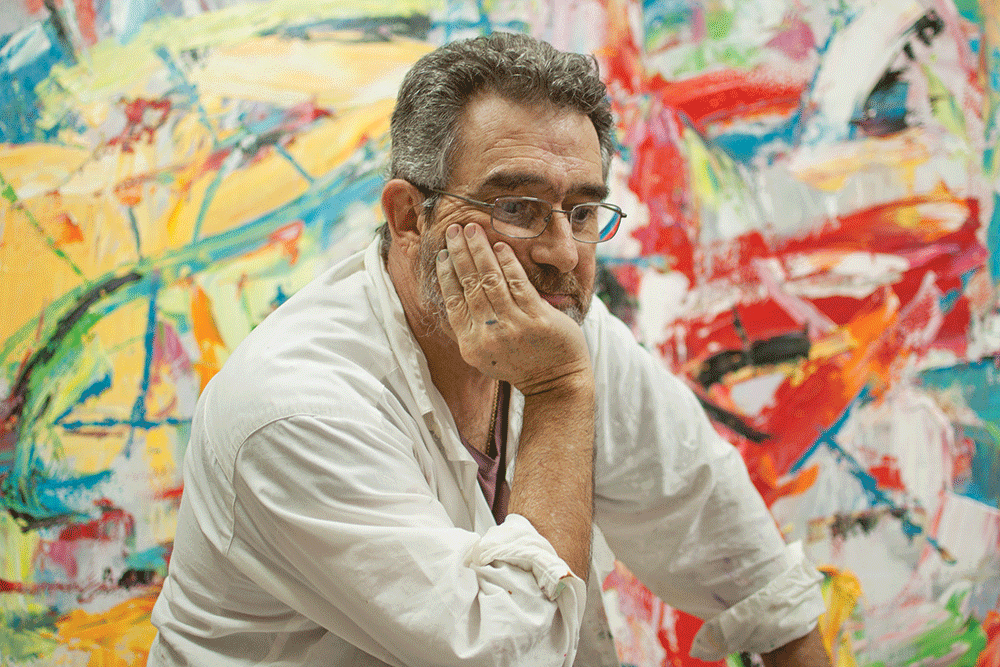
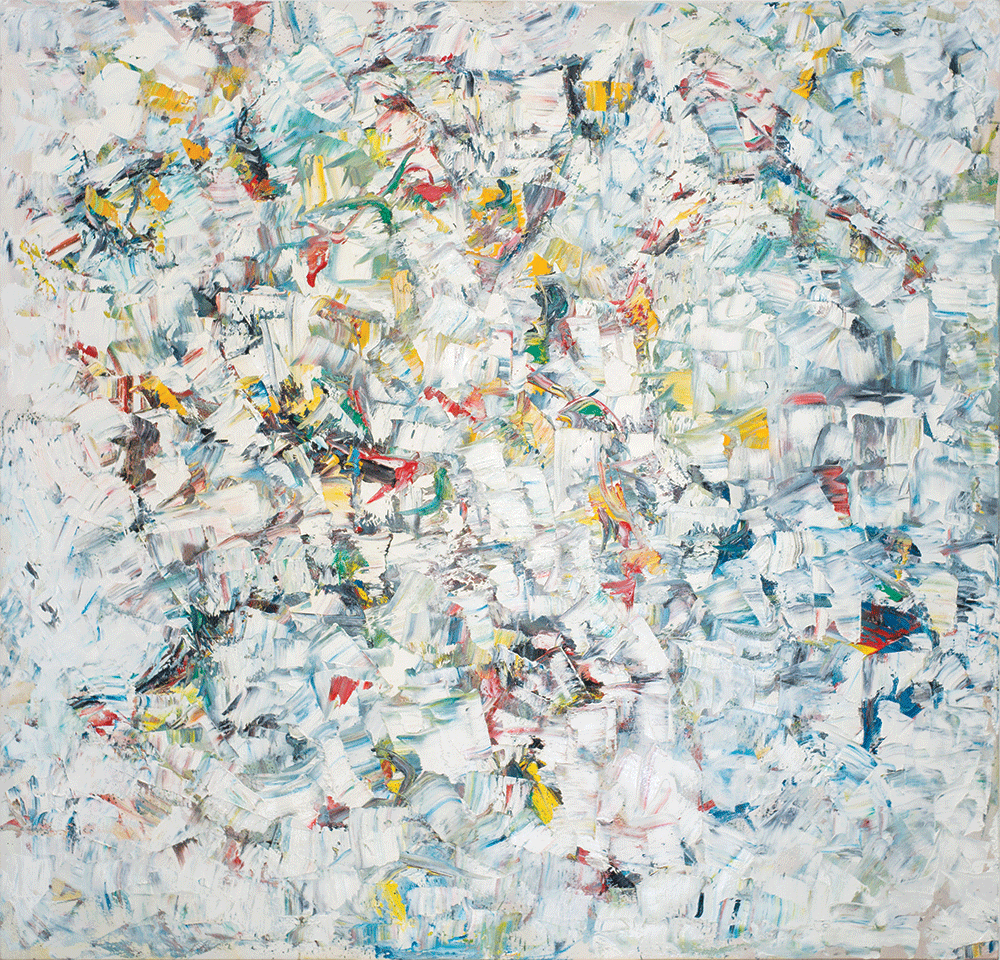

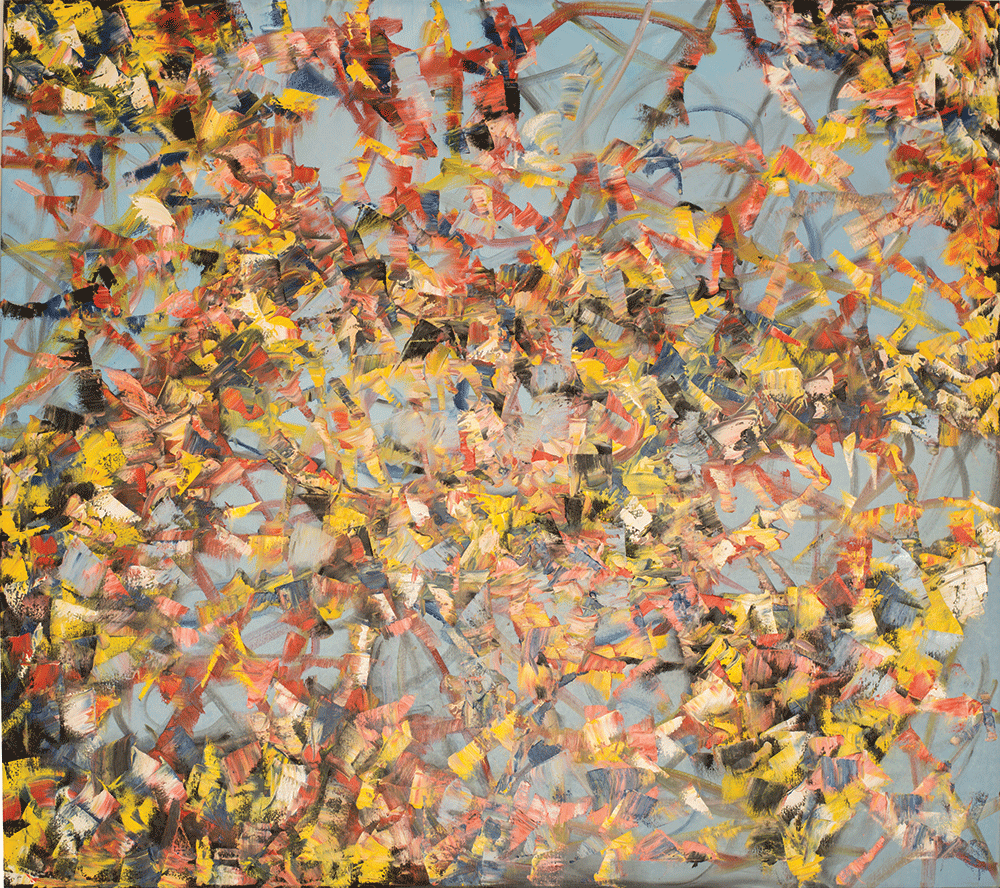
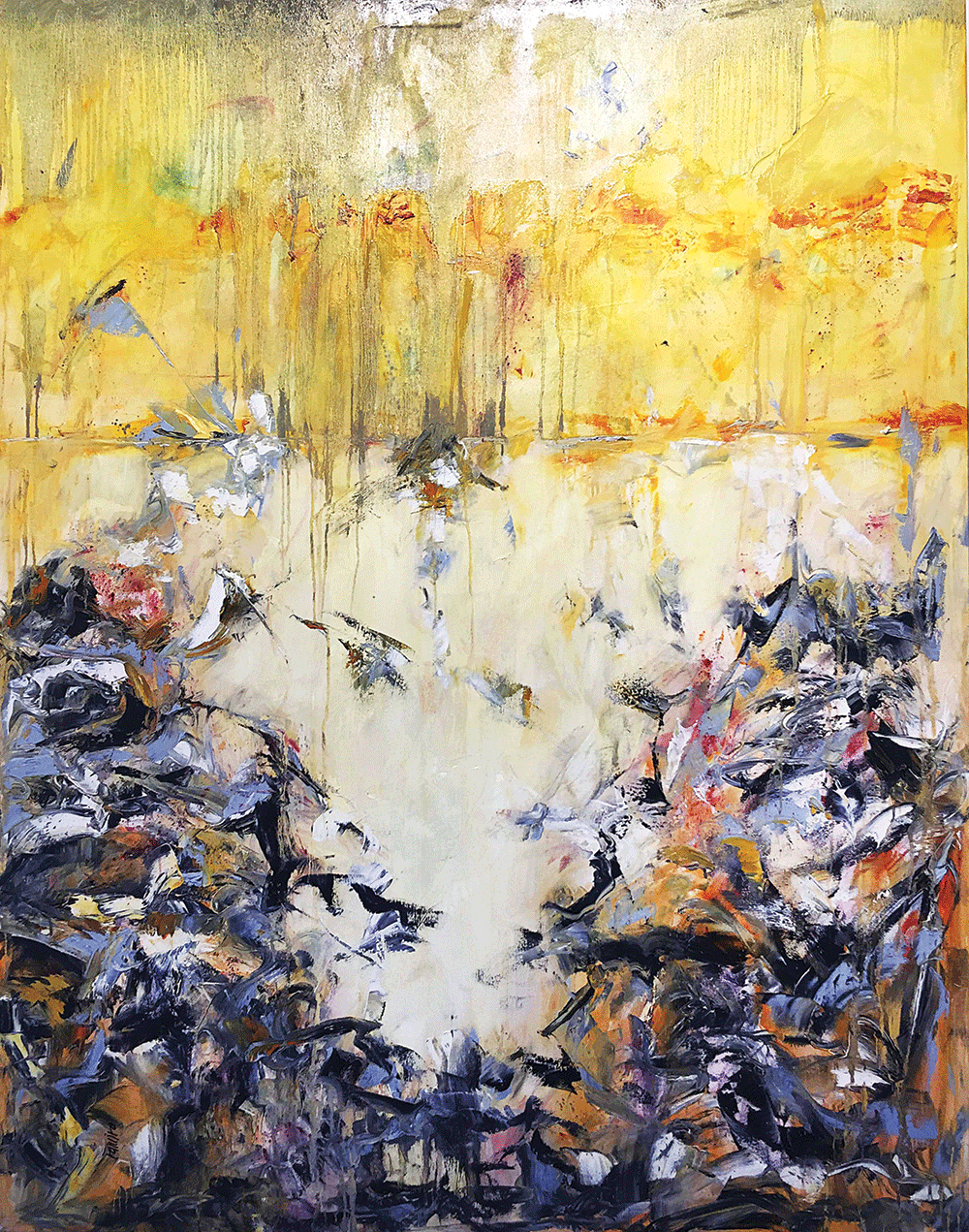
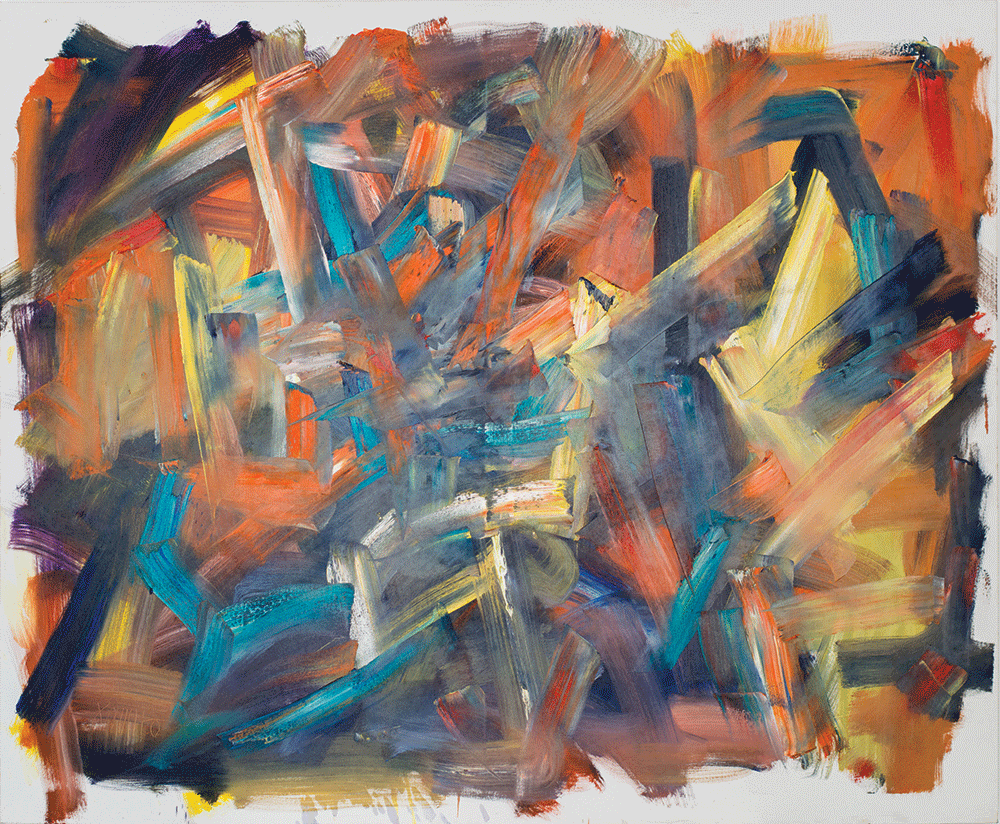


































Leave a Reply
You must be logged in to post a comment.